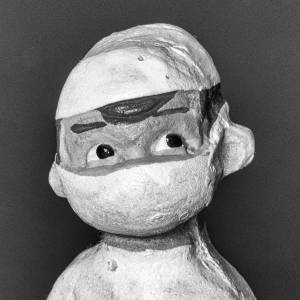Laycock Abbey Camera Obscura
No, I didn't accidentally put the picture on the right upside down. It was taken from the image on a screen on the inside wall of the little hut on wheels. The hut is actually a camera obscura (the definition of which is "a darkened box with a convex lens or aperture for projecting the image of an external object on to a screen inside, a forerunner of the modern camera"). If you look at the picture of the hut you'll note that it has a lens on a box sticking out of its left side. When you go in and shut the door, after your eyes adjust you can see on the screen (on the opposite inside wall from the lens) a faint, inverted image of the scene outside. My own camera actually managed to "see" the camera obscura's image better than my naked eye, using a high ISO setting and a longish exposure.
We were at Lacock Abbey, near Chippenham in Wiltshire, and spent a very interesting few hours there. Apart from its history as a nunnery (until Henry VIII dissolved the monasteries) it was later the home of the Fox Talbot family; as you may know, William Henry Fox Talbot was the originator of the negative/positive photographic process which remains the mainstay of non-digital photography to this day. His first ever "salted paper" photograph was taken of a window in this very building in August 1835. It's for this very reason that they've set up this mobile camera obscura on the site. Fascinating.

Comments
Sign in or get an account to comment.


